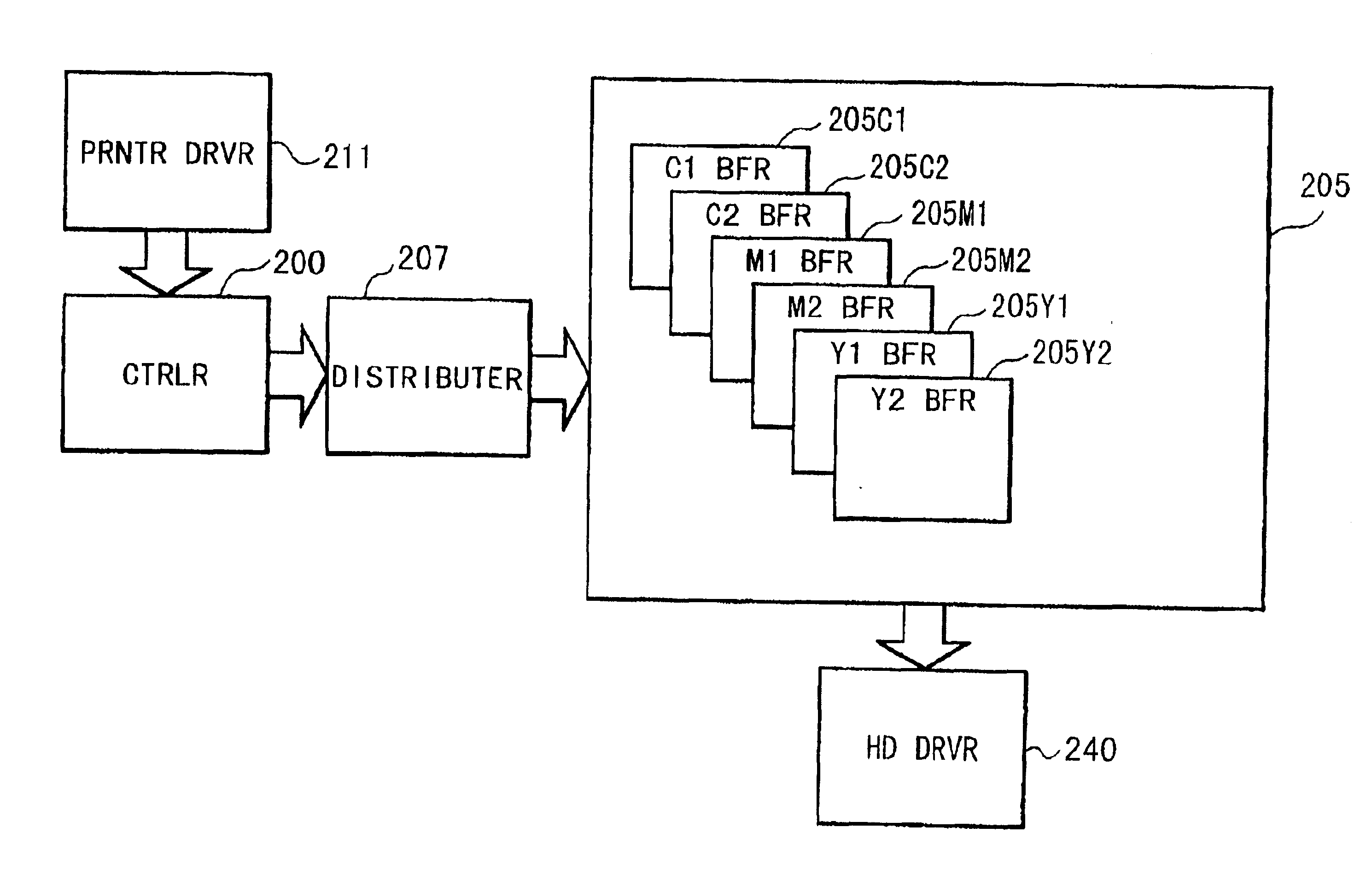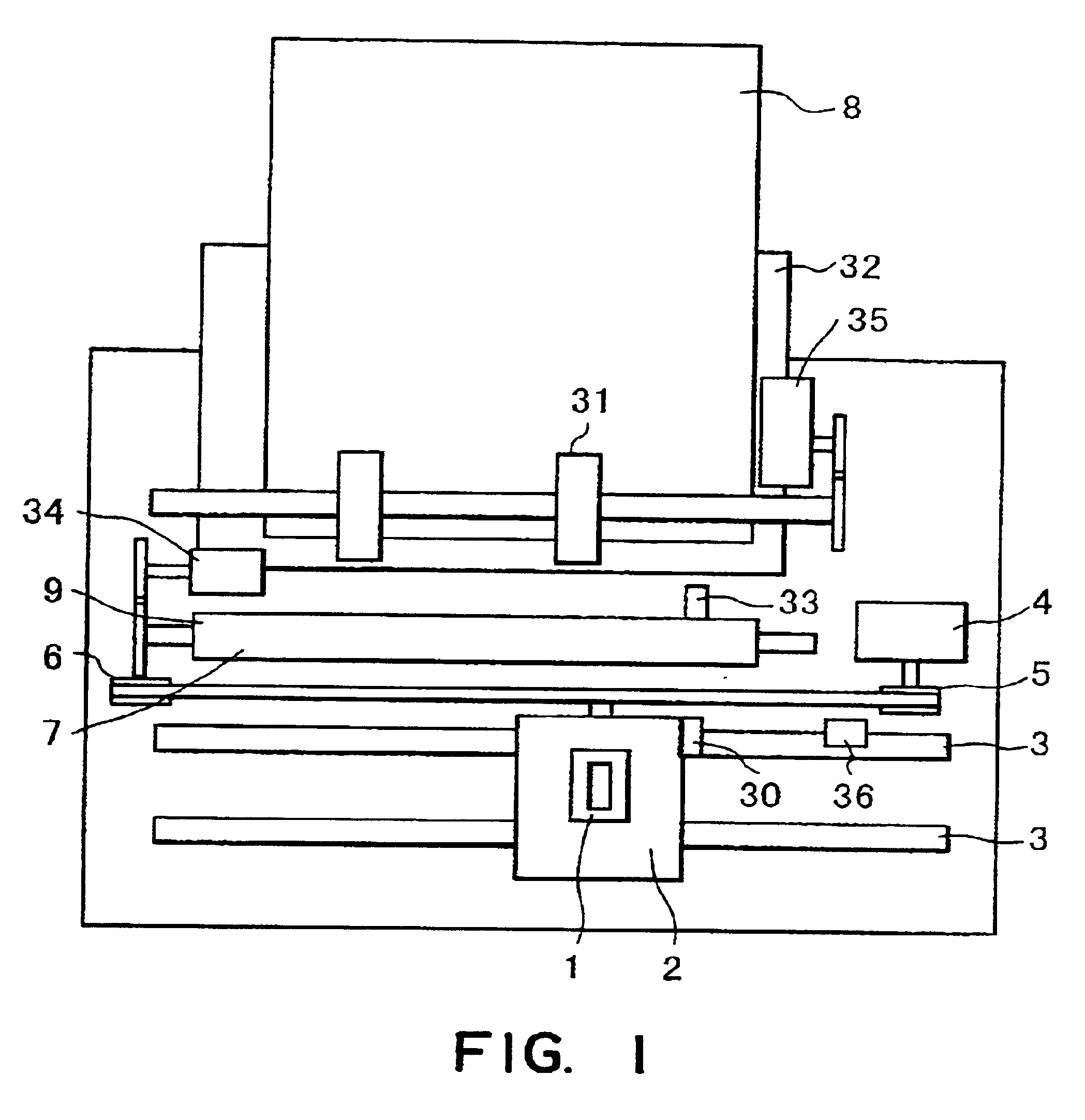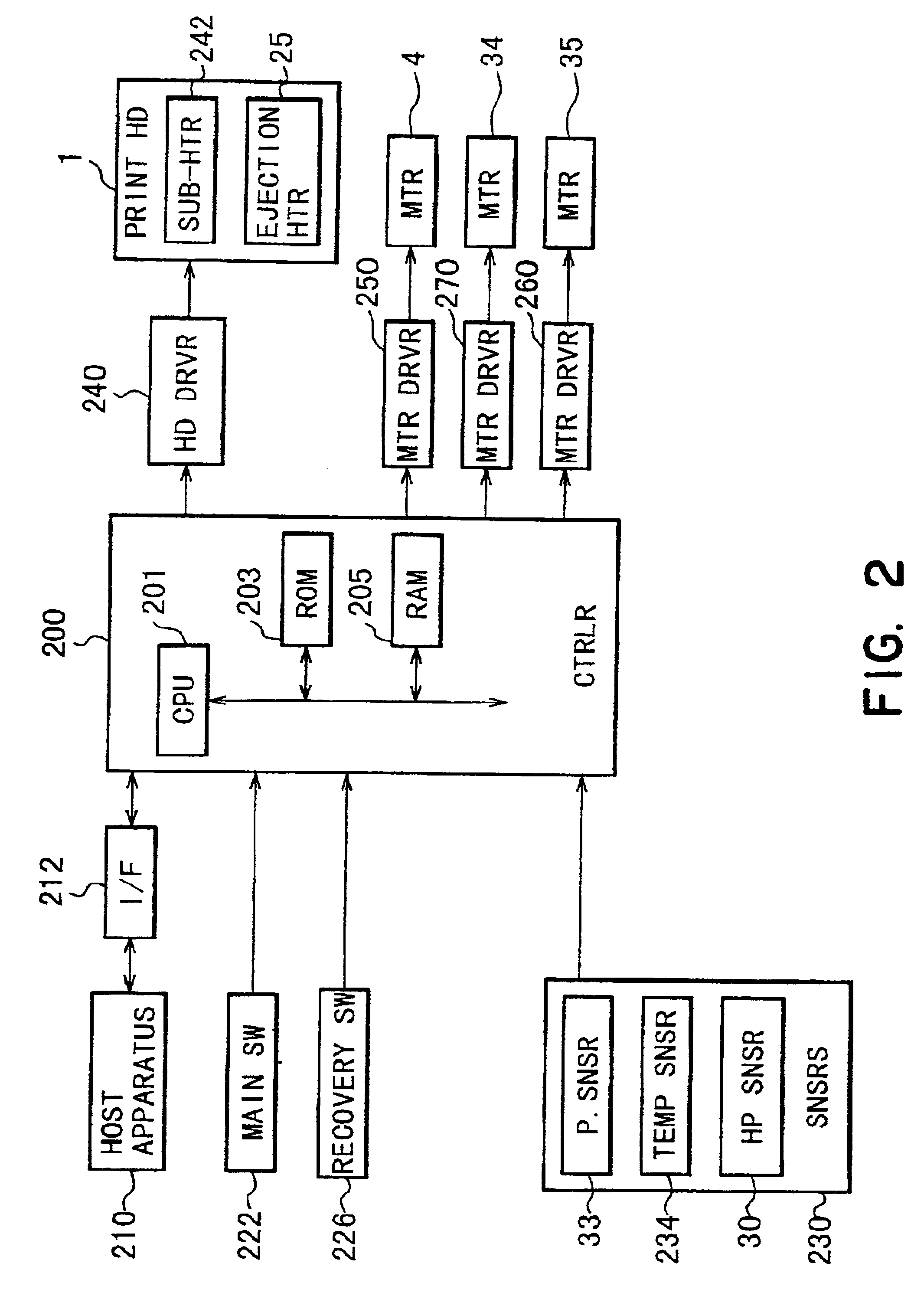Bidirectional printing method and apparatus with reduced color unevenness
a bidirectional printing and color uneven technology, applied in the direction of printing mechanisms, spacing mechanisms, printing, etc., can solve the problems of band color non-uniformity, color non-uniformity in the form of bands, and color non-uniformity attributable to scanning directions, so as to reduce the color non-uniformity
- Summary
- Abstract
- Description
- Claims
- Application Information
AI Technical Summary
Benefits of technology
Problems solved by technology
Method used
Image
Examples
embodiment 1
(Embodiment 1)
[0062]FIG. 3 is a partial schematic view of a major part of a recording head portion of a head cartridge 1. In this Figure, designated by 100 is a first recording head for ejecting cyan ink (C1). Designated by 101 is a first recording head for ejecting magenta ink (M1). Designated by 102 is a first recording head for ejecting yellow ink (Y1). Designated by 103 is a second recording head for ejecting yellow ink (Y2). Designated by 104 is a second recording head for ejecting magenta ink (M2). Designated by 105 is a second recording head for ejecting cyan ink (C2). Additionally, a recording head for ejecting Bk ink may be used.
[0063]The head cartridge 1 is constituted by such recording heads.
[0064]In head cartridge 1, each of the recording heads includes a plurality of ejection nozzles. For example, the recording head 100C1 includes cyan ejection nozzles 110 for ejecting a relatively larger size of droplet of cyan ink. The recording head 101M1 includes magenta ejection no...
embodiment 2
(Embodiment 2)
[0111]The combinations of dots are not limited to those described in the foregoing, but various combinations are usable. In FIG. 3, when the secondary color is to be printed, the dot-on-dot structure necessarily results, but this is not limiting, and the dot arrangement with which the dots do not tend to overlap with each other when the binarization process is effected is possible.
[0112]FIG. 10 shows an embodiment in which the dots are allotted in such a manner. The dot arrangement of FIG. 10 is similar to that of FIG. 3, but an arrangement in which the dots are separated or deviated (pixels 140-147) is added to the previous dot arrangement (pixels 130-139).
[0113]For example, at level 6, pixels 140, 141 at which the relatively smaller dots are split (not dot-on-dot) are added. By the distribution circuit, the data are stored in the buffer such that incidence probabilities of the pixels 131, 132, 140, 141, at which the level is at 6, are substantially equal along the ra...
embodiment 3
(Embodiment 3)
[0123]In Embodiment 1 described hereinbefore, one pixel is constituted by a pair of two dots of the same size, and the order of shots of a pair of different size dots of the same color ink is symmetrical, at least for one color. In such examples, one pixel is constituted by a pair of two dots, and therefore, the examples are preferable when the maximum density of print is desirable such as when the images are formed on an OHP sheet. When the maximum density is not required, the maximum density may be provided by the relatively larger dot.
[0124]In Embodiment 2, for high density portions, the order of shots of the same coloring is symmetrical at least for one color as in the foregoing Embodiments, and in the half-tone portions, use is made of a symmetrical recording head for bidirectional printing, and the combinations of the used recording heads are switched between when the recording heads scan in the forward direction and when they scan in the backward direction. By d...
PUM
 Login to View More
Login to View More Abstract
Description
Claims
Application Information
 Login to View More
Login to View More - R&D
- Intellectual Property
- Life Sciences
- Materials
- Tech Scout
- Unparalleled Data Quality
- Higher Quality Content
- 60% Fewer Hallucinations
Browse by: Latest US Patents, China's latest patents, Technical Efficacy Thesaurus, Application Domain, Technology Topic, Popular Technical Reports.
© 2025 PatSnap. All rights reserved.Legal|Privacy policy|Modern Slavery Act Transparency Statement|Sitemap|About US| Contact US: help@patsnap.com



